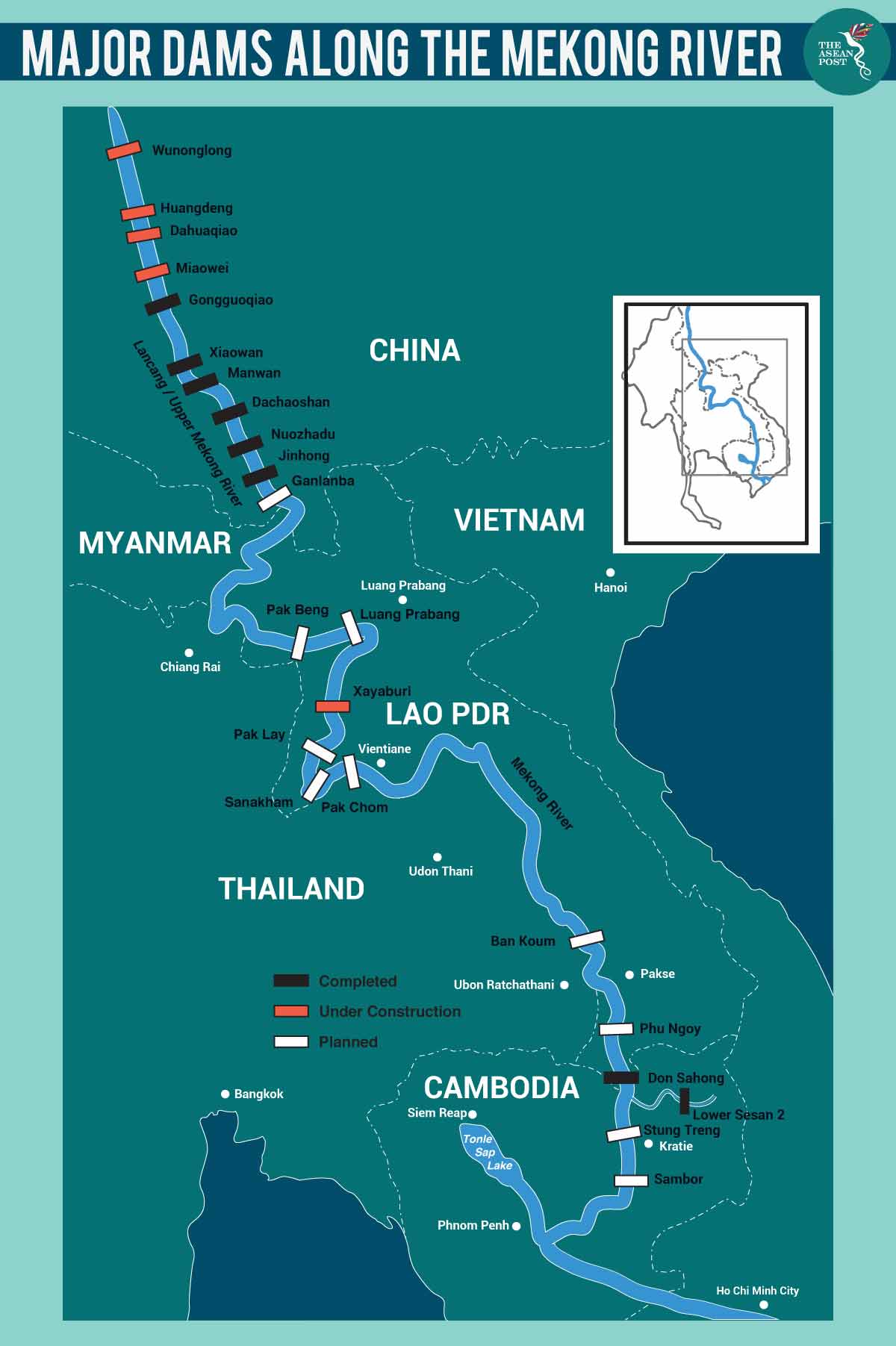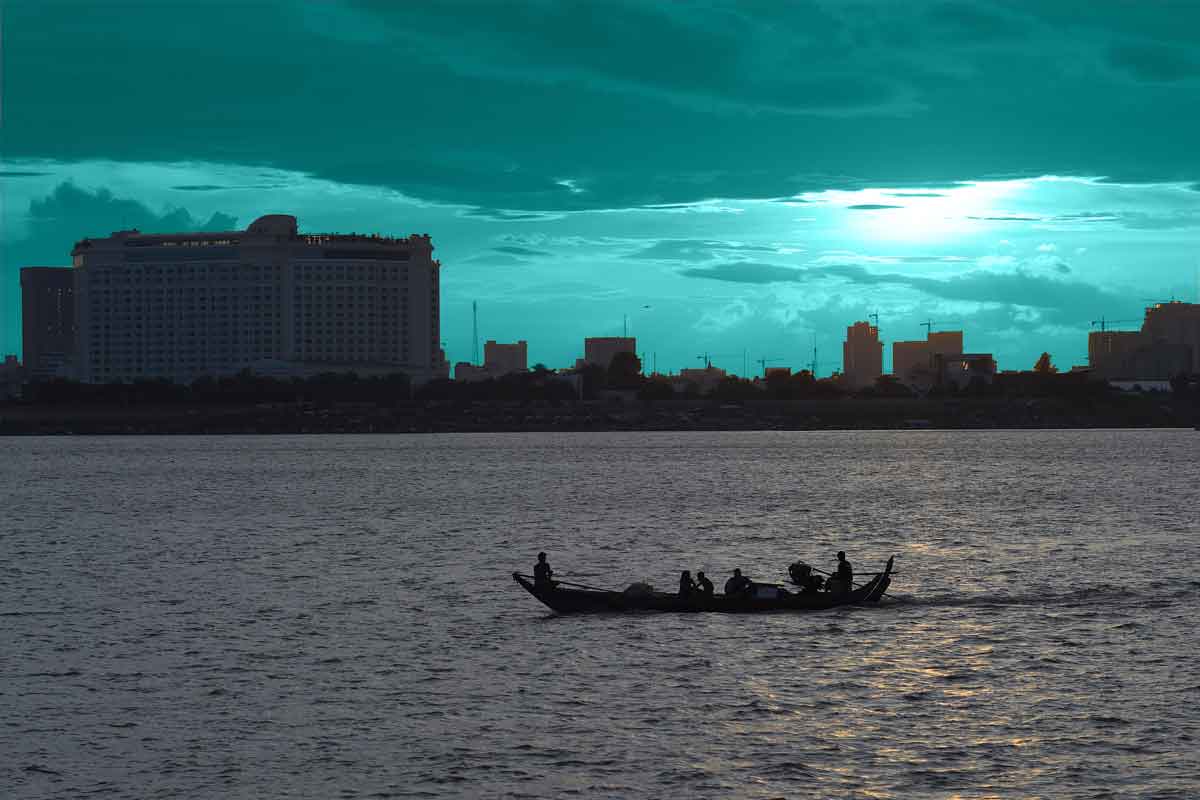Water levels at Southeast Asia’s largest river may be at its lowest levels in a century.
Low rainfall, high temperatures and poor dam regulations are contributing to a historic low at the Mekong, affecting the region’s agriculture and fishing industries and leading to rapidly drying taps.
Chinese dams control the flow of the 4,350-kilometre (km) river which originates in the Tibetan highlands before travelling across Myanmar, Lao, Thailand, Cambodia and Vietnam. International Rivers, an environmental advocacy non-governmental organisation (NGO), notes there are seven dams along the Mekong river in China – with 20 more planned or under construction.

Analysis of satellite images by Brian Eyler, Southeast Asia Program Director for the Stimson Center – a Washington-based think tank which promotes international peace and security – found that the water level in the Golden Triangle, a region where the borders of Myanmar, Lao and Thailand meet, was lower on 19 July than the previous century-low in April 2016.
“This could be very likely the lowest point the river has experienced in the last hundred years, and it might even extend farther than that,” he told Radio Free Asia.
The monsoon season, which usually starts in May but has yet to get under way, has been a big reason behind the low levels. However, Eyler said two key dams – China’s Jinghong dam and Lao PDR’s Xayaburi dam – are just as responsible for the situation.
Key role
Dams play a central part in shaping the narrative surrounding the Mekong river.
Lao PDR’s Xayaburi dam is currently undergoing tests – although its engineers have promised that it will have limited impact on the communities in the surrounding area. But with China’s dams among the largest in the world, it is the Jinghong dam upriver which is of most concern.
“It might not matter what’s happening above that (Jinghong dam). What that dam is doing, in releasing water, will impact downstream flows,” said Eyler, noting that the dam has hardly released any water this monsoon season due to the drought.
Eyler, who recently authored a book titled ‘The Last Days of the Mighty Mekong’, said there are plans for 500 new dams to be built along the Mekong – the impact of which is uncertain.
Farmers across the region are suffering as a result, with Thai Prime Minister Prayut Chan-o-cha among those who have promised assistance.
Farmers feeling the heat
Speaking to Thai media last week, Prayut said only 40 percent of the country’s farmland was irrigated, adding that the government had asked China, Lao and Myanmar to release more water from their dams upriver.
Nearly four million acres of paddy fields in 20 Thai provinces have been hit by a lack of rainfall, and Thai rice exporters have warned of rising prices unless there is rain.
Meanwhile in Lao PDR, the lack of rain has affected nearly two million acres of rice fields.
The current low water levels have hit Lao PDR hard, with the country’s meteorological department recording a 75 percent decrease in rainfall since early July compared to the same period in previous years. The media in Lao have even reported that villagers’ boats are getting stuck in the Mekong’s banks after a nine-meter drop in water levels.
All this is especially worrying considering the region should be experiencing rainfall as it is the height of the monsoon season.
“Although the relatively rapid and sustained decrease in water levels and discharge from June to July 2019 has been unprecedented, it does not reflect the natural recession of the seasonal flows when during this period the water should be slowly increasing.” This was pointed out by the Mekong River Commission (MRC), a regional platform for water diplomacy in a report.
From the upper reaches of the lower Mekong basin in Thailand’s Chiang Saen to Lao PDR’s Luang Prabang and Vientiane, and further down to Thailand’s Nong Khai and Cambodia’s Neak Luong, the water levels are all below those recorded in 1992 – which was by far the year with the lowest flow on record observed by the MRC.
With the need to generate power from the upriver dams seemingly a greater priority than the livelihoods of people living in downstream communities – and with climate change an increasing concern – low water levels are set to be a recurring event in the coming years.
Related articles:
